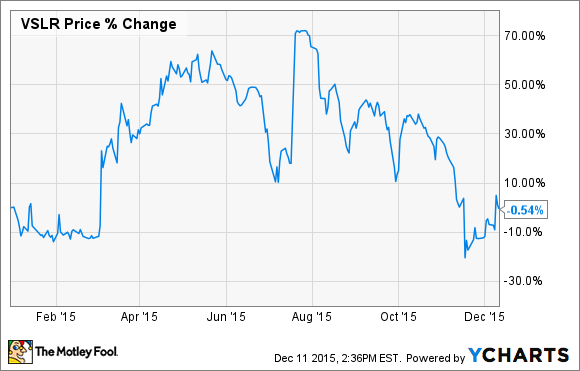Vivint Solar Inc (VSLR) has had a rocky 2015 to say the least. The company came into the year with a low stock price and low expectations, crushed those expectations early in the year, causing a pop, shot even higher when it was announced SunEdison (SUNEQ) was buying it for $2.2 billion, but slunk to nearly breakeven for the year as SunEdison's business fell apart.
A modified acquisition package from SunEdison was recently agreed to, but even that might not go through considering the deals SunEdison has backed out on in the last few months alone. So Vivint Solar continues operations.
In the midst of the ups and downs, however, there was one move that should have caught investors' eyes.
The biggest change ever for Vivint Solar
For its short history as a company, Vivint Solar has had one dominant business model. It sold solar leases/power purchase agreements to customers and that was it. You couldn't buy a system from them; you couldn't take out a loan; and there was very little choice in the components Vivint Solar installed.
That changed in November when Vivint Solar said it would partner with Mosaic, which started as a crowd sourcing company for solar projects to offer loans to customers. The product will start with sales to Utah residents, but the company plans to expand to other states in the "near future".
An important long-term trend in solar
This is a nod to changing trends that will likely take place in solar. Leases or power purchase agreements have been the dominant financing mechanism in residential solar over the past few years. The structure was driven largely by tax benefits like the federal investment tax credit and accelerated depreciation that were hard for homeowners to exploit. Developers that were more familiar with how to attain these tax benefits could then lease systems to homeowners and sell off bundled solar leases to capital markets in order to fund projects. As system prices have come down. though, more people have the income to use the full tax credit. Plus, in 2017 the ITC falls from 30% to 10% for commercial solar systems, so there won't be as much of an incentive to use third party financing.
But the bigger driver is that loans provide the largest cost savings for customers, a pattern confirmed by studies from NREL and solar quote aggregators like Energy Sage. The market is expected to move in that direction as tax subsidies fall and solar installation costs decline.
The move into loans may have been a necessity, but it was important for Vivint Solar to show that it can modify its business to changing market conditions. A partnership with a company like Mosaic will mean Vivint Solar doesn't have to take the long-term risk of solar payments onto its own balance sheet, meaning greater revenue and earnings immediately for loans.
A good move for Vivint Solar
Whether or not the SunEdison acquisition goes through, the move to solar loans is a good idea for Vivint Solar. The company couldn't stay with a single product offering in an industry where customers are demanding choice. And this shows a little flexibility from a business that's had very little flexibility as it's grown.
Investors will want to see more flexibility in the future, with new products like energy storage, higher efficiency panels, and energy management connected to the home. But for now this important step toward flexible financing is a good step for Vivint Solar.






